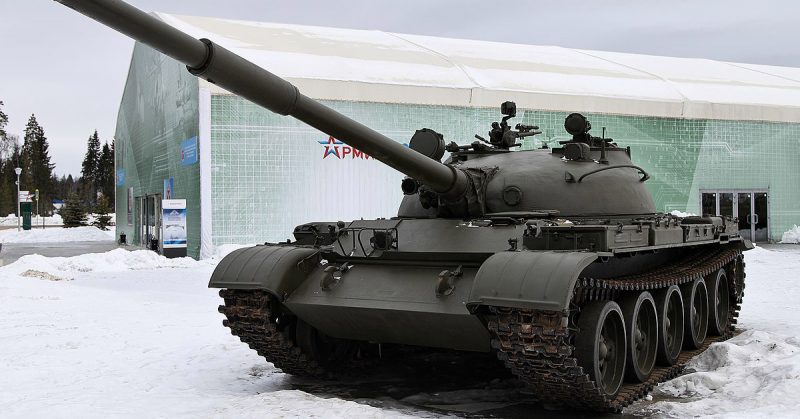The Soviets emerged from the Second World War with one of the best tank designs in the world. This set them up for a long line of successful fighting vehicles throughout the Cold War.
T-34/85
First introduced in 1940, the original T-34 was a mainstay of the Soviet fighting forces during World War Two. Over the course of the war, it was the recipient of many changes. Most importantly, its 76mm gun was replaced with an 85mm, with the new version being labeled the T-34/85.
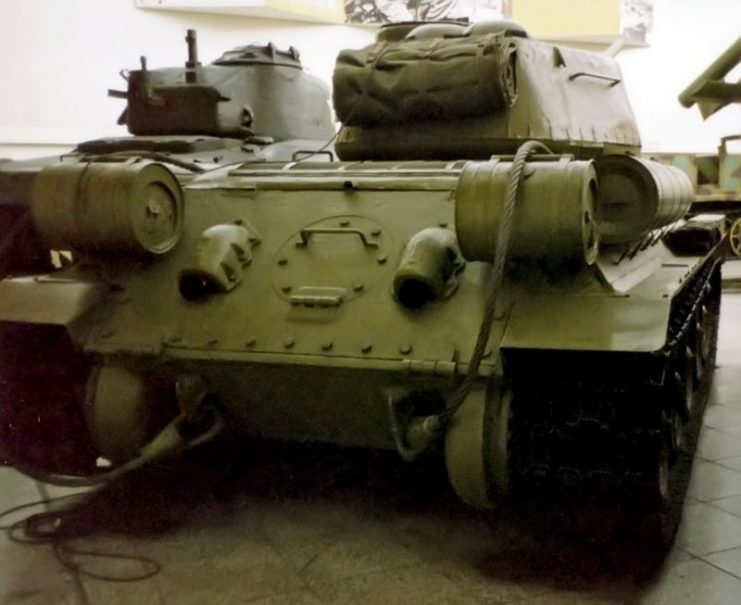
The T-34 had an all-welded hull. A bow machine gunner sat to the right of the driver, providing extra fire against infantry and vulnerable targets. The engine and transmission were in the rear. External fuel tanks let it carry extra fuel, and as they were more vulnerable, these were used up before the supplies stored inside the hull.
Many people consider the T-34/85 to be the best tank of the Second World War. It was certainly the most successful tank fielded by the Soviet Union. As a result, it remained in production in the USSR until 1950, and in Poland until 1953. It remained in use into the 1960s.
IS-3
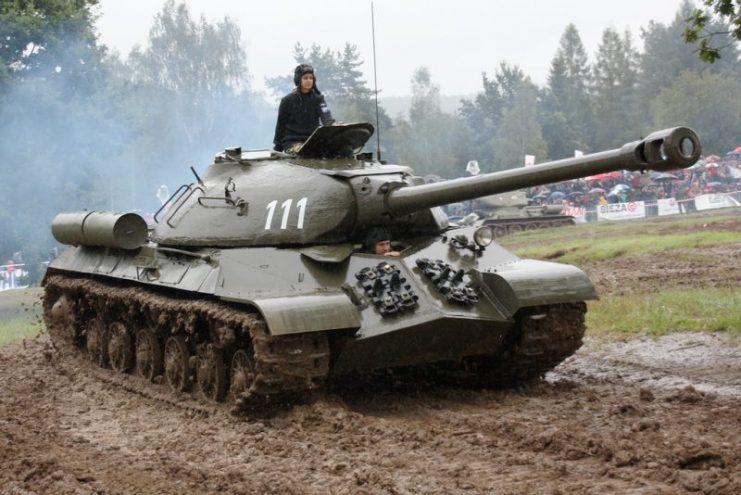
The IS-3 was designed as the next step up from the wartime IS-2, with an improved hull and turret. Production began in the spring of 1945, but by then the war was nearing its end, and the new tank never saw fighting. It found use in the post-war armies of the Soviet Union and its Warsaw Pact allies as part of their tank and mechanized divisions. By the 1960s, it was only used in special units, and it was withdrawn from combat units by the end of the 1960s.
The IS-3’s main weapon was a 122mm D-25 gun. There was also a 7.62mm machine gun mounted with the main gun and a 12.7mm machine gun on the roof for use against aircraft.
The IS-3 lacked nuclear, biological, and chemical (NBC) protection and night-vision equipment, putting it at a disadvantage against tanks developed during the post-war period.
T-10
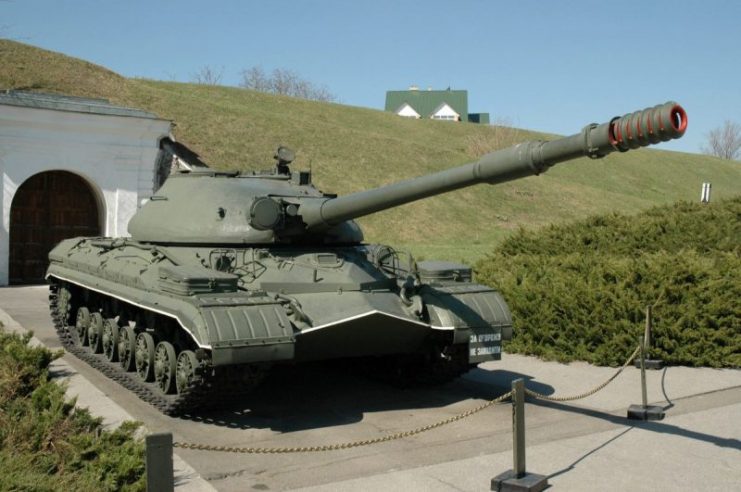
The IS series of tanks continued into the 1950s. The eventual result was the IS-10, renamed the T-10 in 1953, a year after it entered service.
The T-10 had a rolled armor hull. Though such technology was common in the tougher tanks of the Second World War, improvements in weaponry would make it obsolete in the post-war decades, as improved weapons forced designers to develop new protective technology.
As in many Soviet tanks, the driver sat at the front, with the fighting compartment between him and the engine at the back.
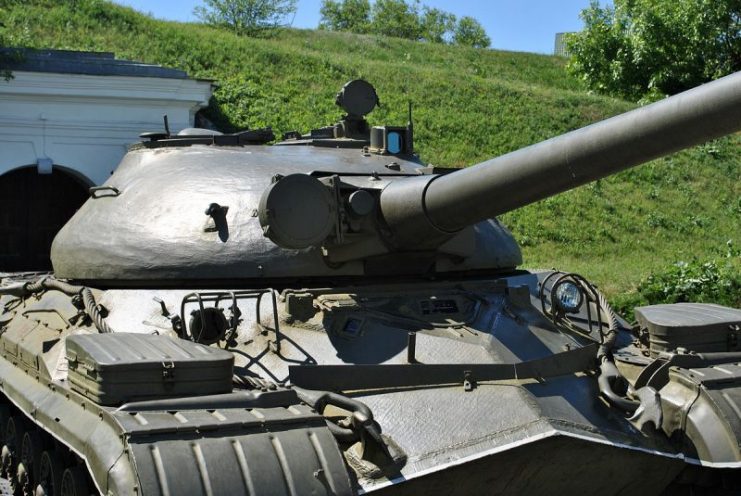
The T-10 carried similar weaponry to its predecessor, the IS-3. The most notable difference was that the 7.62mm machine gun was replaced with a 12.7mm one.
Over the course of the 1950s, improvements were made to the T-10. Later models had stabilization for their main gun, heavier weapons, NBC equipment, and infra-red lights for night fighting. In a quirk of Soviet planning, the T-10M was produced for five years at two different plants that produced incompatible parts for what was supposedly a single design of tank.
PT-76
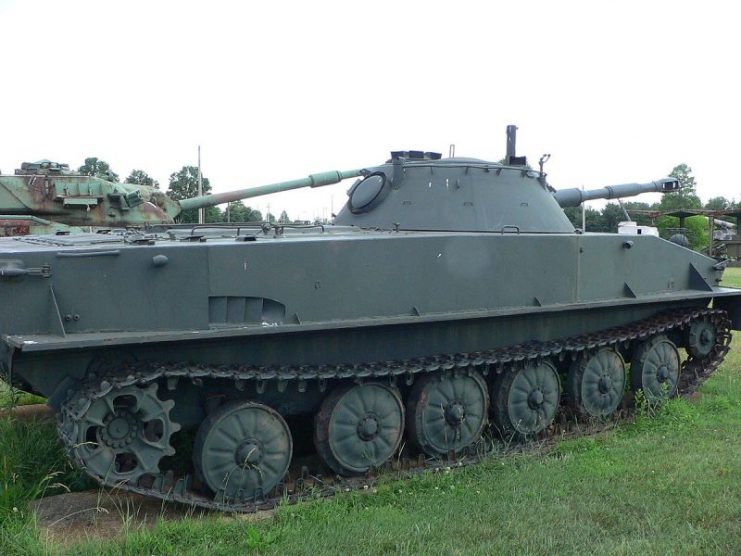
In the post-war era, the Red Army sought to equip itself with a new light tank. This was to be an amphibious vehicle, to help with offensive operations, and shared components with a new light armored personnel carrier for ease of maintenance.
The result was the PT-76, which went into service in 1951.
The aim of producing an amphibious tank was entirely successful. All the crew had to do before entering the water was erect a trim vane and switch on the bilge pumps. A pair of water jets would then power the vehicle through the water, with hatches over the jets providing steering.
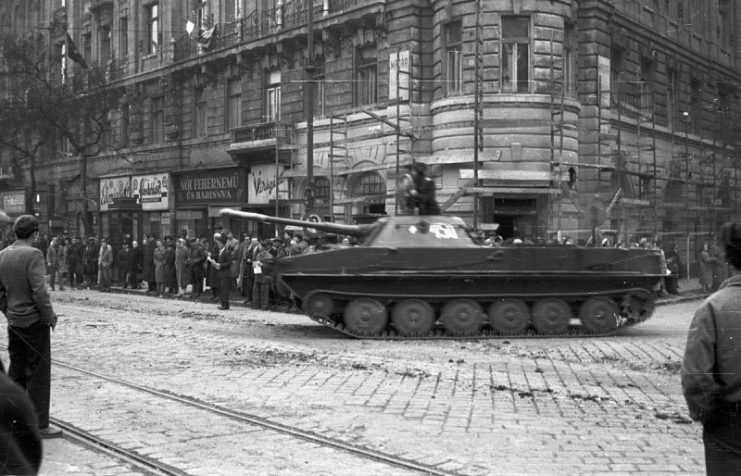
Models of the PT-76 carried a series of 76.2mm main guns, as well as 7.62mm machine guns.
The original PT-76 didn’t have NBC protection. Later models introduced this, as well as auxiliary fuel tanks, improved communications gear, and a more buoyant hull.
T-62
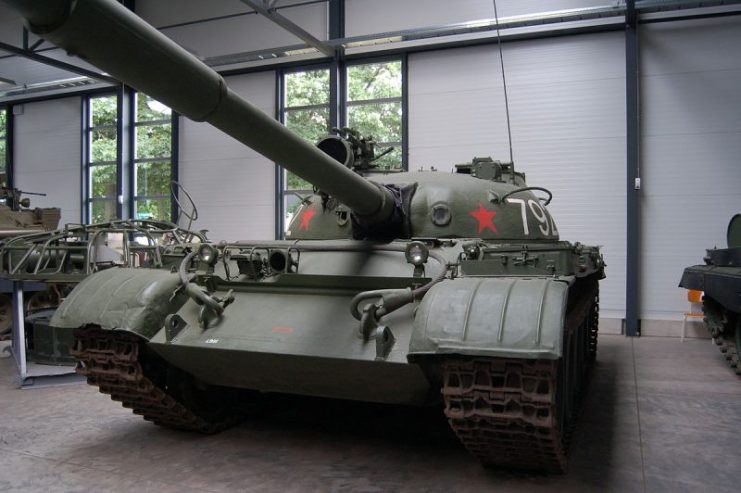
A series of T- tanks were mainstays of the Soviet armed forces throughout the Cold War. Introduced in 1961, the T-62 was developed from the previous T-55 and used some of its parts, including the NBC protection and engine. It had a larger hull and wider turret than its predecessor, letting it carry a larger gun in the form of a 115mm 2A20 smoothbore.
This was the first smoothbore gun mounted on a Soviet tank. Its ammunition improved armor penetration, getting through almost 20% thicker armor than the gun on the T-55. It was more expensive than the ammunition for preceding tanks, though the gun itself was relatively cheap to produce.
Though the T-62 surpassed the T-55, the T-55 remained in use as the chassis for engineering and recovery vehicles, because of how much more expensive the T-62 was.
Early T-62s had protection against nuclear threats but not biological or chemical ones. Chemical protection was added later.
T-80
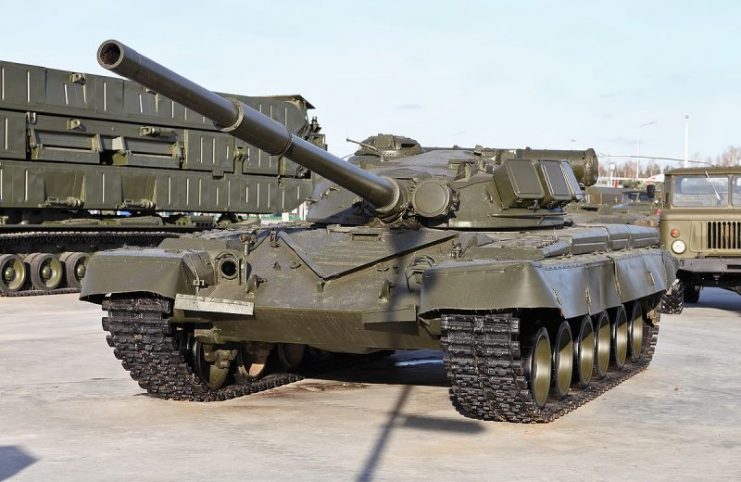
The T-80 was first produced in 1976, with full-scale production starting in 1978, in the form of the T-80B.
The T-80 replaced the diesel engine of previous tanks with a gas turbine. This provided superior performance, though it used more fuel and was costlier to run.
Following a similar design to the previous T-64 and T-72, the T-80 carried a 125mm gun with an autoloader. The T-80B added a better fire-control system, with its optical rangefinder replaced by a laser unit. Four missiles could be fired from the main gun.
As well as superior weaponry, the T-80B had improved composite armor on the turret. 20mm steel appliqué armor was added during the 1980s, to counter more powerful guns.
All T-80s had NBC protection, fire-suppression systems, and entrenching blades at the front, as well as other subsidiary equipment.
